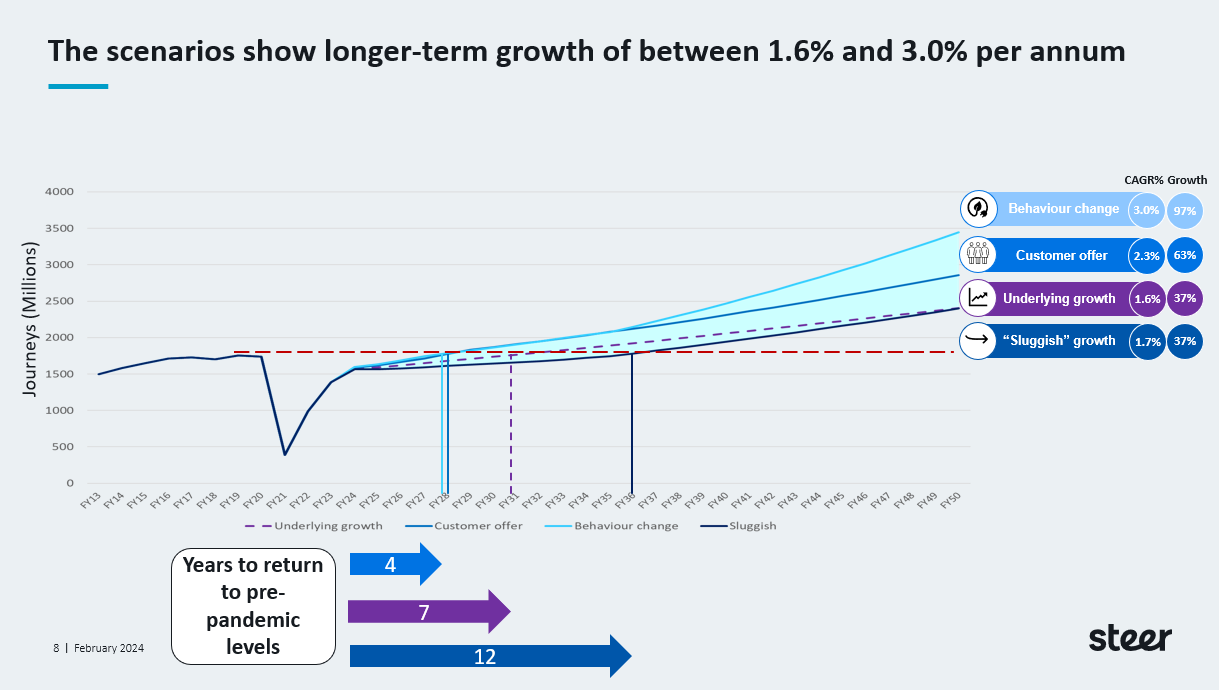In a recent report that we delivered for the Railway Industry Association, looking at the potential for longer term rail growth we suggest that rail passenger journeys have the potential to double by the year 2050.
Key highlights from our report include:
- Scenarios suggest that rail passenger volumes could experience growth ranging from a minimum of 37% to nearly 100% by 2050, compared to pre-pandemic levels. This equates to an average annual growth rate of 1.6% to 3.0%.
- We suggest that regardless of the scenario, enabling rail demand growth in Great Britain in the longer term will require investment in network capacity, necessitating adaptation from government policies, rail services, and operators.

The scenarios show longer-term growth of between 1.6% and 3.0% per annum
Our comprehensive analysis marks the first scenarios for future passenger rail growth published since the pandemic outbreak. It concludes that even under the most pessimistic scenarios, rail demand in Great Britain is expected to exhibit steady growth over the longer term. The analysis encompasses various demand drivers, including population and economic growth, as well as potential policy interventions that could further stimulate long-term passenger rail growth and revenue enhancement.
Addressing the research, Darren Caplan, Chief Executive of the Railway Industry Association, commented with great satisfaction, "This groundbreaking report outlines a spectrum of scenarios for future rail passenger growth, all indicating an increase in passenger numbers. This growth will undoubtedly impact future capacity considerations."
"Even under the most conservative growth scenario, where the government maintains the status quo, rail passenger numbers are projected to rise by a third by 2050. Conversely, with an ambitious strategy focusing on enhancing customer experience and encouraging behavioural changes, passenger numbers could potentially double by 2050, leading to significant revenue gains," Caplan emphasised.
He stressed the imperative for rail reform and the formulation of a long-term rail strategy, including plans for enhanced north-south capacity, essential for accommodating future demand and ensuring the continued growth and benefits of rail travel in the UK.
To find out more contact: Andrew Davies or Duncan Edmondson.
For a comprehensive analysis and implications for the industry, read the full report here.
